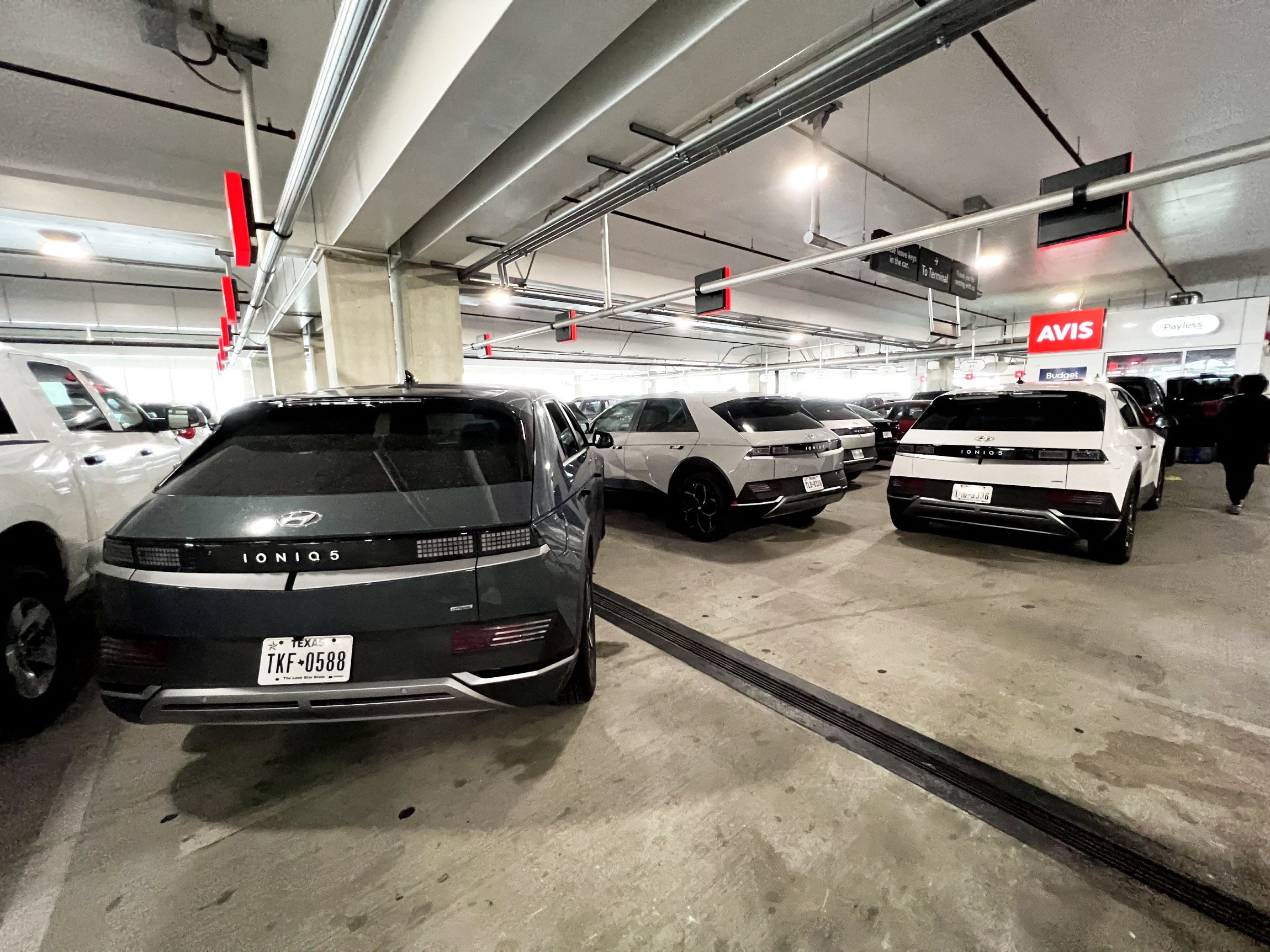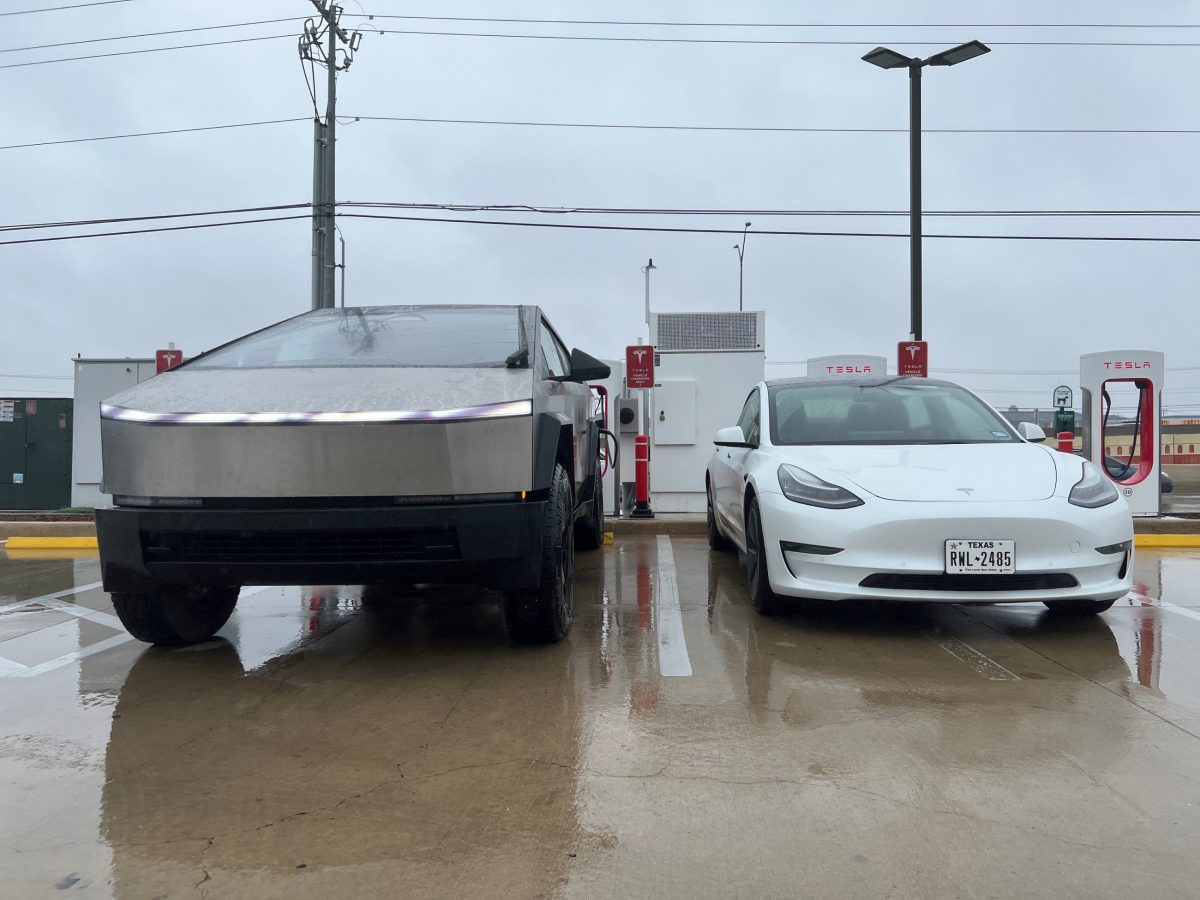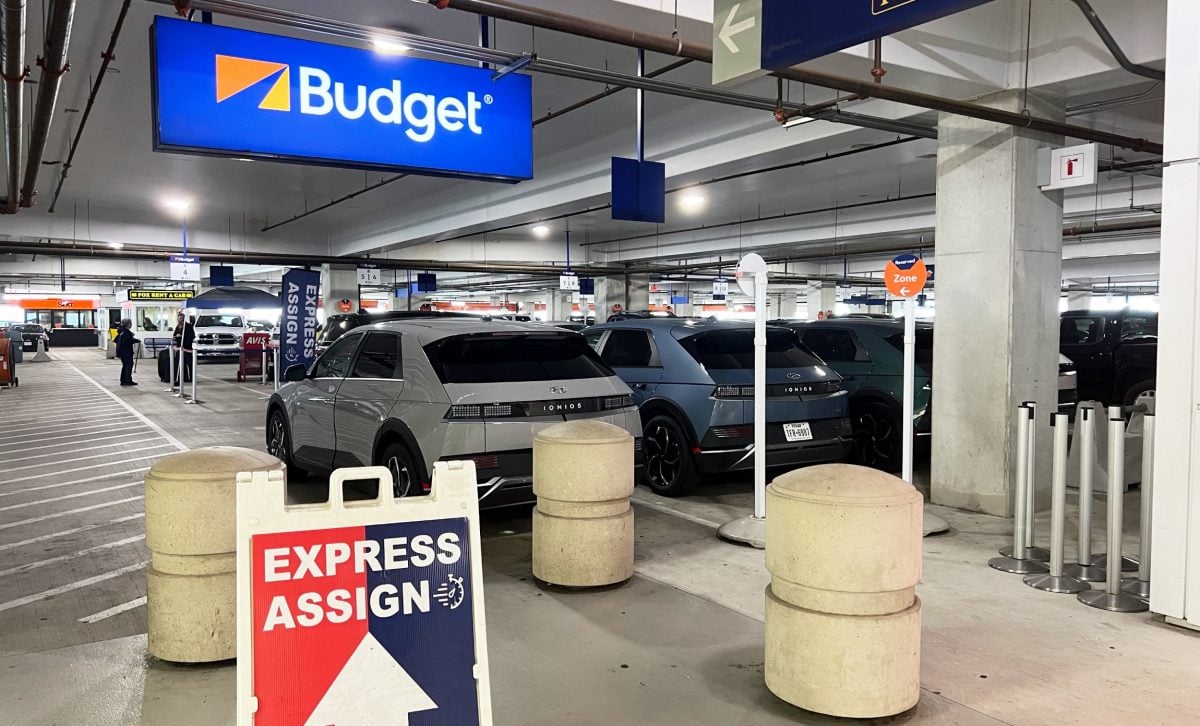Over the last several months, we’ve seen headlines about rental companies like Hertz offloading some of the electric vehicles from their fleets in favor of more gasoline-combustion cars. This feels like a step backward to me and other EV advocates. But what is driving this hard reality check at rental companies?
Depreciation and Repair Costs Hitting Rental Companies Hard
The official story centered around the EV depreciation expenses these rental companies were facing. Rental companies typically keep cars in their fleets for 1-2 years and until a predetermined mileage before selling them on the used market. Hertz does not need to break even on the MSRP of the new car, but only on the amount the car had appreciated before it was flipped. The EV Price Wars of 2023 certainly wreaked havoc on financial projections at rental companies because EV makes kept lowering prices, and therefore EVs had suddenly lost a lot of value on the secondhand market. This caused Hertz to record a $245 million depreciation expense on their financials. It’s hard to run any business when costs are unpredictable.
Likewise, rental companies are reporting that when an EV gets into an accident, it takes more time and cost to get the vehicle back on the road. A rental car that isn’t on the road isn’t earning the company revenue. In my own experience, any repair work done by Tesla Service takes longer than originally promised, and there aren’t many options for third-party repairs. Parts can take a long time to source, and service technicians are always struggling to keep up with an exponentially growing fleet of Teslas. Because Teslas represent the bulk of EVs in rental fleets (and on the roads), EVs have gained this reputation of being hard and expensive to fix.
Infrastructure and Lack of Driver Education Leads to Bad Experiences
Drivers who rent EVs are most likely going to rely on public charging infrastructure, and we know that relying on public charging is still going to be a sub-par customer experience, especially if your EV doesn’t have access to Tesla Supercharger stations.
I saw first-hand late last year when I rented from Budget at San Antonio airport. I always rent electric cars when I travel, and after driving electric for years, I can plan my route and charging stops successfully. So when booking my rental for San Antonio, I paid extra money to reserve an electric vehicle.
But when I arrived to pick up the car, I was surprised to see that all they had available on the lot were electric vehicles and there was a line of customers queuing to pick up cars. There was a whole fleet of beautiful Hyundai Ioniq 5s lining the parking garage, but customers were skeptical to take one. The Budget employees offered Ioniq 5s to anyone who wanted one, otherwise, customers had to wait until their reserved gas guzzlers were ready.

What I witnessed was a lack of EV education both on the side of the customers and rental company employees. Customers rightfully had questions regarding range, where to charge, and how long to charge. The employees were extremely friendly and apologetic, but they didn’t have solid answers to address those concerns. I’ve overheard some bad advice given to a customer; suggesting they use the 120-volt outlet to plug in their car at their distant destination, for example. When another employee explained that an app download and an account were required to use public charging stations, the customers very quickly lost interest.
I was the only customer in the queue who had actually reserved an EV, and the employees were happy to assist me. As much as I wanted to experience the Ioniq 5 again, I had to visit Austin and Dallas on a fairly aggressive timeline, and I did not want to chance it with overcrowded Electrify America and EVgo stations in central Texas.
I asked the employee if they had any Teslas in their rental fleet, and as luck would have it, they found one in the back that was returned and washed moments earlier. To my surprise, they had a Model 3 Long Range, which would be perfect for fast and efficient long-distance travel. (Most rental Teslas the the barebones RWD trim with a smaller battery)
My trip was completed with zero range or charging issues because Tesla’s Supercharger network is excellent in their new home state of Texas. But the whole time I was thinking about how I would fare in that Ioniq 5 because CCS charging options were at times sparse along the route.

What Needs to Change
EV prices will stabilize as more models enter the market and we find equilibrium. Once depreciation becomes more predictable, rental companies will resume buying EVs in volumes. Repairs supply chain and costs, too, will improve with time and experience.
The biggest hurdle right now is the lack of interoperability between EVs & charging stations, and the payment systems. We are in the process of merging toward a common charging connector in North America (thanks NACS!), and all charging stations need to be accessible to all EVs (in progress). Lastly, payment for charging needs to be easier than it is right now. Plug-and-charge on all EVs would be fantastic, but credit card readers would be hugely convenient to make charging truly universal between different EVs and universal for drivers with varying technical abilities. When charging a rental EV becomes as easy as pumping gas, the mainstream customer will be ready.
The early adopters can figure out how to keep their rental EVs charged. But the regular people going to Hertz or Budget are just looking for transportation, not an experiment. Because of the nuances involved in driving an electric car long distance, it is going to be a few years still until an average Joe or his elderly parents can rent an EV and have full confidence that their journey will go smoothly.
Considering buying a Tesla? Use our refferal link to get $1,000 off, and help support our content.
